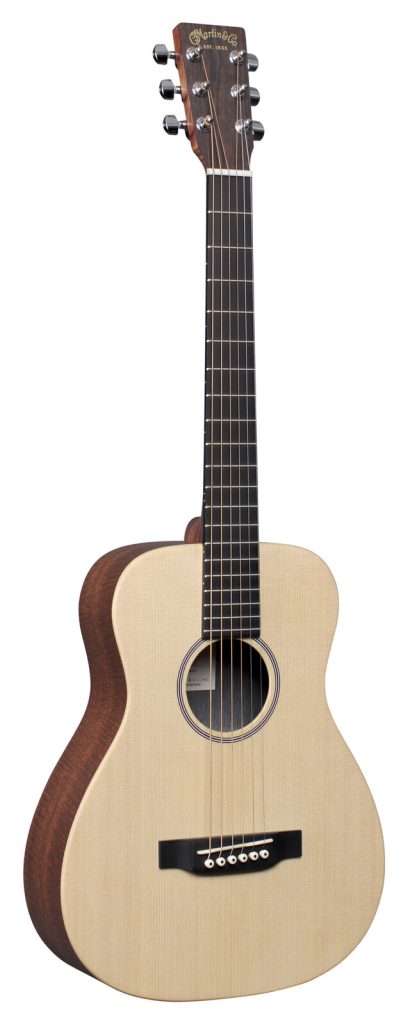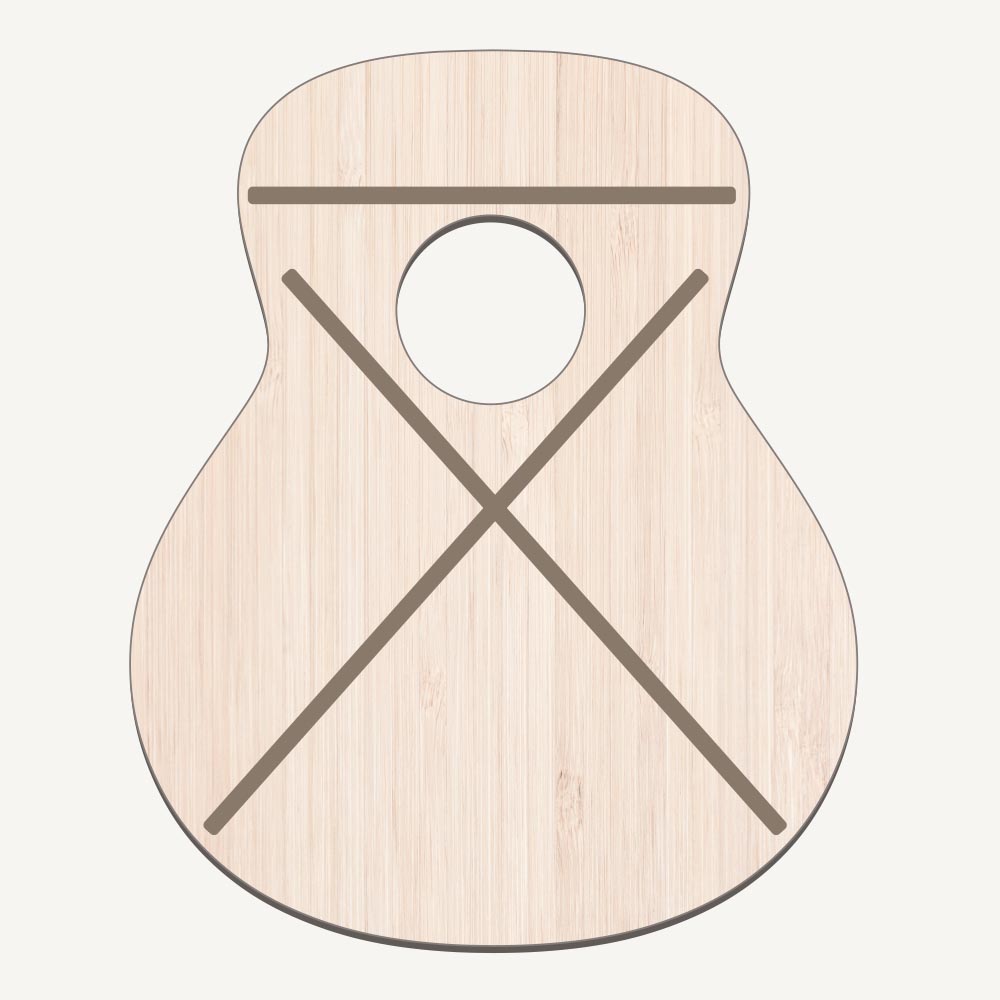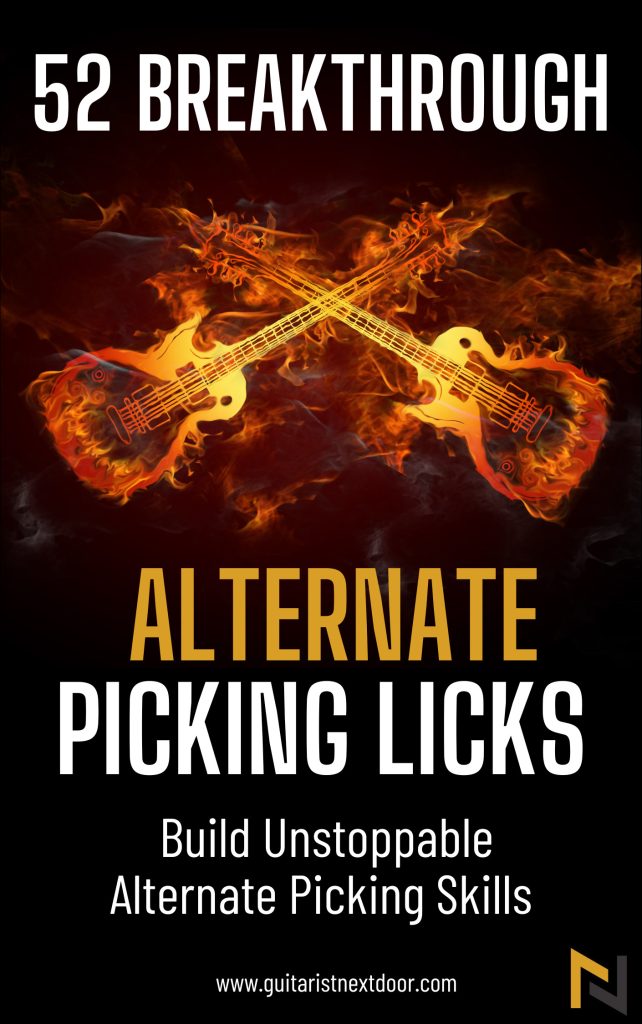
Author: Teemu Suomala
I first grabbed the guitar in 2009. I started this website in January 2020 because I couldn’t do window installation anymore due to my health problems. I love guitars and have played dozens and dozens of different guitars through different amps and pedals over the years, and also, building a website interested me, so I decided to just go for it! I got lucky and managed to get awesome people to help me with my website.
I also got lucky because I have you visiting my website right now. Thank you. I do all this for you guys. If you have any recommendations, tips, or feedback, just leave a comment, I would love to chat with you. I have also been fortunate to produce content for several large guitar websites, such as Songsterr, Musicnotes, GuitarGuitar, and Ultimate Guitar.
I spend my spare time exercising and hanging out with my wife and crazy dog (I guess that went the right way…).

Editor: Edward Bond
Edward has been playing the guitar since 2002. So Edward has over 20 years of experience as a guitarist, has authored 15 guitar books, has written for renowned music blogs, and spent a decade teaching music. He began merging his passion for writing and music in 2020 and has written for big guitar websites such as Guitar Head Publishing and KillerGuitarRigs.com.
Originally from Seattle, Edward moved to Norway in 2021 for a master’s in music. He’s studied at the Jazz Institute Berlin and Conservatorium van Amsterdam, and currently resides in Trondheim. His education includes a European Jazz Master’s, a diploma in Film and Game Scoring from Sofia, and a Bachelor’s in Jazz from University of Oregon.
Edward has played in numerous bands and currently, Edward works on his own project Starship Infinity
Are you torn between the charms of the Little Martin and the Baby Taylor guitars? These two powerhouses have taken the world of smaller-body acoustic guitars by storm, captivating musicians with their compact size and impressive sound.
In this article we aim to:
- Demystify the allure of both instruments.
- Shed light on their unique qualities.
We will compare and contrast:
- Features.
- Tonal characteristics.
- Playability.
- Overall value.
Whether you are a beginner seeking the perfect fit or a seasoned performer looking for something fresh, we hope to equip you with the knowledge to help you make the best choice!
Read on to discover which guitar suits you best.
Pros and Cons of Little Martin Guitars
| PROS | CONS |
|---|---|
| Portable and lightweight | Smaller body may produce quieter sound |
| Ideal for travel and on-the-go playing | Limited tonal depth |
| Easy to play for beginners | Less projection and volume |
| Great for smaller players and children | Limited options in terms of wood and features |
| Quality craftsmanship and materials | It may not suit certain playing styles or genres |

Who Should Play a Little Martin?
- Travelers and On-the-go Musicians: Little Martin guitars are excellent options for musicians who frequently travel or need a guitar they can easily carry.
- Beginners and Smaller Players: The smaller size and playability make the Little Martin an excellent acoustic guitar for small hands.
- Intimate Acoustic Settings: These guitars are suitable for playing in quieter and more intimate settings, such as small gatherings, coffeehouses, or acoustic jam sessions.
- Fingerpickers: Little Martin guitars are considered ideal for fingerpicking guitarists. These instruments offer a balanced tone and excellent projection, making them well-suited for intricate fingerstyle playing.
Imagine Having The Technique, Gear, and Sound of The GOATS… But Don’t just imagine. Find out.
Joe Satriani
Main Band
Solo Artist
Main Guitar
Ibanez Joe Satriani Signature JS2480
Joe Satriani
| Uniqueness | (4.5) |
| Accuracy | (5.0) |
| Speed | (5.0) |
| Right Hand | (5.0) |
| Techniques | (5.0) |
| Versatility | (3.5) |
| Performance | (4.5) |
| Overall Lead | (5.0) |
| Overall Rhythm | (4.5) |
Tommy Emmanuel
Main Band
Solo Artist
Main Guitar
Maton TE Personal
Tommy Emmanuel
| Uniqueness | (3.5) |
| Accuracy | (4.5) |
| Speed | (5.0) |
| Right Hand | (5.0) |
| Techniques | (5.0) |
| Versatility | (4.0) |
| Performance | (4.0) |
| Overall Lead | (5.0) |
| Overall Rhythm | (5.0) |
Steve Vai
Main Band
Solo Artist
Main Guitar
Ibanez Steve Vai JEM77
Steve Vai
| Uniqueness | (4.5) |
| Accuracy | (5.0) |
| Speed | (5.0) |
| Right Hand | (4.5) |
| Techniques | (5.0) |
| Versatility | (3.0) |
| Performance | (4.5) |
| Overall Lead | (5.0) |
| Overall Rhythm | (4.5) |
Scenarios Where Little Martins Might Fall Short
- Performers Requiring Loud Volume: The Little Martin guitars might not deliver your desired volume level if you need a guitar with significant projection and volume.
- Players Focused on Tonal Depth: Little Martin guitars may not match the rich tonal depth of full-size Martin guitars.
- Specific Playing Styles and Genres: A Little Martin guitar might not suit your preferred genres. Other guitars better match the tonal requirements of particular musical styles.
- Players Preferring Bigger Instruments: Some prefer the feel and sound of full-size guitars. Little Martin models do not offer the same resonance and projection.
- Individuals Seeking Customization Options: Little Martin guitars typically have more limited options for customization regarding tonewoods and features than higher-end models.
Check Little Martins Today’s Price on
*Consider all links in this post to be affiliate links. If you purchase, at no additional cost to you, we may earn a small commission. It helps us to keep the lights on, thanks! 🙂
Pros and Cons of Baby Taylor Guitars
| PROS | CONS |
|---|---|
| Quality craftsmanship | Needs frequent maintenance |
| Comfortable acoustic guitar for small hands | Sounds ‘tinny’ and almost ukulele-like |
| Stays tuned even after capo use | Doesn’t stay in tune for a long period |
| Suitable for quiet and intimate settings | Doesn’t respond well to playing fingerpicking |

Who Should Play a Baby Taylor?
- Young Kids: Baby Taylors are specifically designed as ideal starter guitars for young children. Their smaller ¾ size makes them more comfortable and manageable for little hands, allowing young kids to learn and play more easily.
- Beginner Guitarists: Regardless of age, Baby Taylors are an excellent choice for beginners just starting their musical journey. Taylor Guitars’ exceptional sound quality and durability make them suitable for learners who need a reliable instrument.
- Traveling Musicians: Due to its smaller size and lightweight construction, Baby Taylors are an excellent option for traveling musicians. They are easier to carry around during travels, making them a convenient choice for musicians.
- People with Smaller Hands: Not only is the Baby Taylor suitable for young children, but it’s also beneficial for individuals with smaller hands. Some adults and older players may find the ¾ size more comfortable and easier to play, especially if they have difficulty reaching the frets on a full-sized guitar.
Scenarios Where Baby Taylors Might Fall Short
- Experienced Players: Experienced guitarists may prefer full-sized guitars, as they are generally more accustomed to the standard size and might find the ¾ size less comfortable.
- Performing Musicians: Professional musicians performing on big stages might opt for a full-sized Taylor guitar to ensure their sound reaches the audience effectively.
- Players with Larger Hands: Individuals with larger hands might find the smaller size of the Baby Taylor less comfortable to play, and their fingers may feel cramped on the fretboard.
Check Baby Taylor’s Today’s Price on
Key Similarities and Differences Between Little Martins and Baby Taylors
Let’s explore some of the key differences and similarities between Little Martins and Baby Taylors including:
- Shape and Size.
- Materials and Construction.
- Sound and Tone.
- Electronics and Features.
Specifications comparison of Little Martins and Baby Taylors
| Little Martins | Baby Taylors | |
|---|---|---|
| Size | ¾ size (modified 0 shape) | ¾ size (dreadnought shape) |
| Sound | Crisp, conventional sound | Clear, loud sound |
| Versatility | Works well with vocals as well as on its own | Works well with vocals as well as on its own |
| Durability | Reliable and durable construction | Reliable and durable construction |
| Electronics | Electronic versions available | Electronic versions available |
| Left-handed Versions | Left-handed versions available | Left-handed versions available |
Compare the Key Specs for Each Range
| Model | Price Range ($-$$$$) | Body Style | Top | Back & Sides | Neck Material | Fretboard | Nut Material | Nut Width | Electronics | Saddle | Scale Length |
|---|---|---|---|---|---|---|---|---|---|---|---|
| Taylor Baby Taylor BT1 Walnut Acoustic Guitar – Natural Sitka Spruce | $$ | 3/4 Dreadnought | Sitka Spruce | Walnut | Tropical Mahogany | 19 frets ebony fingerboard | Tusq | 1.6875″ | No | Tusq | 22.75″ |
| Martin LX1 Little Martin Acoustic Guitar – Natural | $$ | Modified 0-14 Fret | Spruce | Mahogany Pattern HPL Textured Finish | Rust Stratabond | 20 (total), 14 (clear) frets, Richlite fingerboard | White Corian | 1.6875″ | No | 16″ Radius Compensated White TUSQ | 23″ |
| Taylor Baby Mahogany BT2e Acoustic-Electric Guitar – Natural Mahogany | $$ | 3/4 Dreadnought | Mahogany | Mahogany body with rosewood/maple frame | Mahogany | 19 fret Ebony fingerboard | Tusq Nut | 1.6875″ | Expression System Baby | Micarta Saddle | 22.75″ |
| Martin LX1RE Little Martin – Natural | $$ | Modified 0-14 Fret | Sitka Spruce | High-pressure Laminate | Rust Birch Laminate | 20 fret, FSC Certified Richlite fingerboarrd | Corian | 1.6875″ | Fishman Sonitone | Tusq | 23″ |
| Taylor Baby Taylor BTe-Koa Acoustic-Electric Guitar – Natural Koa | $$$ | Baby | Solid Hawaiian Koa | Layered Koa | Sapele | 19 fret, ebony fingerboard | NuBone | 1.6875″ | Expression System Baby | NuBone | 22.75″ |
| Martin LXK2 Little Martin – Natural | $$ | Modified 0-14 Fret | Koa Wood Pattern HPL Textured Finish | Koa Wood Pattern HPL Textured Finish | Natural Stratabond | 20 (total), 14 (clear) frets, Richlite fingerboard | White Corian | 1.6875″ | No | 16″ Radius Compensated White TUSQ | 23″ |
Shape and Size
Little Martin guitars utilize a modified 0 body shape. The 0 shape is characterized by its smaller and more compact body, providing a comfortable playing experience for many musicians. It is designed to be well-balanced and easy to handle.

On the other hand, Baby Taylor guitars feature a classic dreadnought shape. The dreadnought shape is one of the most common and popular body types in acoustic guitars. It has a larger and more pronounced upper bout, producing a powerful sound projection and robust bass response.

Frets and Playability
Little Martin guitars typically come with 20 frets. This can benefit more advanced players who want to explore higher notes and melodies. The additional fret allows greater versatility in playing different musical styles and arrangements.
Baby Taylor guitars, on the other hand, come with 19 frets, which still provides a good range for most musical needs. While it has one less fret than Little Martins, it is usually sufficient for most beginners and intermediate players.
Neither guitar’s playability is significantly affected by this slight difference in the number of frets. Both remain comfortable instruments for learning and playing various musical pieces.
Materials and Construction
Top, Back, and Sides
The choice of tonewoods in both Little Martin and Baby Taylor guitars significantly influences their tone, durability, and appearance.
Both guitars feature a solid top, which is a huge bonus for an entry-level guitar.
Little Martin guitars are crafted with a solid Sitka spruce top and mahogany pattern HPL (High-Pressure Laminate) back and sides.
Sitka spruce is a popular guitar tonewood choice due to its:
- Strength and responsiveness.
- Bright, articulate sound.
- Well-balanced tonal range.
The mahogany pattern HPL is a durable laminated wood material that mimics the look of genuine mahogany. HPL is known for resistance to changes in temperature and humidity, providing added durability to the guitar.

Baby Taylor guitars come with a solid spruce or mahogany top and layered sapele back and sides.
Neck Materials and Shape
Little Martin guitars feature a rust birch laminate neck and an FSC (Forest Stewardship Council) Richlite fingerboard. Rust birch laminate necks provide stability and resistance to warping, ensuring the guitar’s neck remains straight and playable over time.
The FSC Richlite fingerboard is a sustainable alternative to traditional ebony, offering a smooth playing surface and contributing to the guitar’s durability.
Little Martin guitars feature a modified low oval neck shape. A modified low oval neck shape:
- Combines the benefits of both a low profile and an oval shape.
- Provides a comfortable grip that accommodates various playing styles.
- Fills the hand nicely, offering a secure feel and reducing fatigue during extended playing sessions.
- Balances ease of play and provides ample support.
- Is suitable for a broad range of players seeking a more versatile and comfortable option.

Baby Taylor guitars have a tropical American mahogany neck and an ebony fingerboard. The ebony fingerboard adds to the guitar’s overall resonance and provides a smooth, sleek surface for effortless playing.
Baby Taylor guitars offer a low C-style neck shape. Benefits of the low C-style neck shape include:
- Easy playability and comfortable grip.
- Slim profile allows for smooth hand movement.
- A sense of familiarity and ease, making it an ideal option for beginners and seasoned players.

Sound and Tone
Little Martin guitars are known for their louder-than-expected volume and a prominent midrange. Combining their modified 0 shape, solid Sitka spruce top, and mahogany pattern HPL back and sides contributes to these distinctive sound characteristics.
Baby Taylor guitars, on the other hand, have a sweet, full voice and a balanced tone. Choosing between a solid spruce or mahogany top and the layered sapele back and sides influences the guitar’s sound.
Check the head-to-head sound comparison of these 2 acoustic guitars:
Impact of Different Factors on Sound and Tone
Let’s look at a few factors that impact the sound and tone of these Martin and Taylor guitars.
Shapes and Sizes
The modified 0 shape of Little Martin guitars and the dreadnought shape of Baby Taylor guitars influence the sound projection and tonal balance. The modified 0 shape of the Little Martin offers:
- A more focused and direct sound projection.
- Emphasis on the midrange frequencies.
In contrast, the dreadnought shape of the Baby Taylor provides:
- A bold and full sound with a well-rounded tonal spectrum.
- Versatility for various playing styles.
Bracing Patterns
Little Martin and Baby Taylor guitars utilize the ‘X’ bracing pattern. This design dates back to the 1850s when it replaced the traditional fan bracing commonly used by European guitar builders.
While fan bracing worked well with gut strings, the shift in market demand towards louder instruments and the adoption of higher-tension steel strings required a sturdier bracing system. Martin’s ‘X’ bracing provided the solution, allowing a seamless transition to steel strings and achieving the desired volume and tone.

Genres or Styles that Suit Each Guitar Best
Little Martin guitars are well-suited for genres and styles where clarity and projection are essential. They excel in:
- Folk.
- Country.
- Singer-songwriter styles.
- Providing a solid presence for vocals and fingerpicking.
The sweet, full voice and balanced tone of Baby Taylor guitars make them versatile for various musical genres. They are well-suited for:
- Light strumming of chords.
- Acoustic pop.
- Blues and jazz.
Electronics and Features
Now let’s look at some of the electronics and special features of both guitars.
Little Martin Guitars
Some Little Martin guitar models come equipped with a Fishman Sonitone pickup system. This pickup system allows the guitar to be plugged into an amplifier or PA system, making it suitable for live performances and recording.
Advantages of Pickup System in Little Martin Guitars
- Amplification: The pickup system amplifies the guitar’s sound. This feature is particularly advantageous for performing musicians.
- Versatility: Adding a pickup system makes Little Martin guitars more versatile. They can be used in both acoustic and amplified settings. This gives the player more options for various musical contexts.
- Consistent Sound: The Fishman Sonitone pickup system accurately captures the guitar’s natural acoustic sound, ensuring a consistent tone when amplified.
Disadvantages of the Pickup System in Little Martin Guitars
- Additional Cost: Models with the Fishman Sonitone pickup system typically come at a higher price point than non-electronic models, which may be a consideration for budget-conscious buyers.
- Potential Feedback: There is a risk of feedback when playing at high volumes or with heavy amplification. Proper setup and technique can minimize this issue.
Baby Taylor Guitars
Standard Baby Taylor guitars have no built-in electronics. However, Taylor offers BT1e and BT2e models as part of the Baby Taylor lineup, which includes the “e” designation, indicating that they come with built-in electronics.
Advantages of the Pickup System in Baby Taylor Guitars
- Amplification: Similar to Little Martin guitars, the pickup system in Baby Taylor’s BT1e and BT2e models allows for easy amplification and performance in live settings.
- Option to Choose: By offering non-electronic and electronic models, Baby Taylor allows players to select the guitar that best suits their needs and budget.
Disadvantages of the Pickup System in Baby Taylor Guitars
- Additional Cost: As with Little Martin guitars, opting for models with electronics will likely come with a higher price tag than standard non-electronic models.
- Increased Weight: The addition of electronics may slightly increase the guitar’s weight.
Other Features and Accessories
Little Martin and Baby Taylor guitars have various extra features and accessories. These may include:
- Tuners: Most Little Martin and Baby Taylor guitars have high-quality, precision tuners to ensure accurate and stable tuning.
- Nuts and Saddles: The nuts and saddles on these guitars are typically made of quality nut materials like Tusq or Nubone.
- Strap Buttons: Many models come with strap buttons, allowing players to use a guitar strap for added comfort during playing.
Price and Value
Both Baby Taylor Guitar and Little Martin prices start from around $400. Most of the models from these lineups cost about $500.
Value Evaluation – Little Martin Guitars
Little Martin Guitars offer value in many ways:
- Near-premium craftsmanship.
- High-quality tonewood.
- The reputation of the Martin brand.
- Optional electronics.
Value Evaluation – Baby Taylor Guitars
Baby Taylor Guitars offer excellent value for their price. They are known for:
- Quality construction.
- Playability
- Reputation of the Taylor brand.
- Good performance
- Sweet, balanced tone.
- Accessibility for beginner and intermediate players
- A budget-friendly option without compromising quality.
The availability of models like the BT1e and BT2e with built-in electronics adds further value for musicians looking for amplification capabilities.
Conclusion
Martin and Taylor Guitars are among the best acoustic guitar brands. However, the choice between a Little Martin and Baby Taylor comes down to your specific needs and preferences as a musician.
- If you’re a beginner or have smaller hands, the Baby Taylor’s comfortable 3/4 size and affordable price may be the perfect fit.
- On the other hand, if you seek solid craftsmanship and more versatile tones, the Little Martin might be your ideal companion for musical exploration.
Both guitars offer good playability and value, representing the reputable brands of Taylor and Martin. Whichever you choose, remember that the most critical factor is finding the guitar that inspires you to play, create, and enjoy the beautiful world of music.
FAQs
Where Are Baby Taylor Guitars Made?
Baby Taylor Guitars are made in Mexico.
Where Are Little Martin Guitars Made?
Little Martin Guitars are made in Mexico.
Which is The Better Brand – Taylor or Martin?
Both Taylor and Martin are reputable brands, each offering high-quality guitars. The choice depends on personal preferences and the specific model’s features.
Is it Worth Spending A Lot On A Guitar for A Child?
Investing in an affordable and quality instrument like Baby Taylor can be a wise choice for young beginners. It’s wise to avoid overspending until the child’s interest and commitment to playing are well-established.
Is The Little Martin A Good Beginner Guitar?
Yes, the Little Martin offers excellent playability and sound, making it a suitable option for beginner guitarists.
Is The Baby Taylor A Good Beginner Guitar?
Yes, the Baby Taylor is a good beginner guitar, designed for easy playability and comfort, making it ideal for those starting their musical journey.
Which Offers Better Value, Baby Taylor or Little Martin?
Baby Taylor and Little Martin offer good value based on their quality and features. The better value, of course, depends on individual needs, preferences, and budget considerations.









Thanks for linking to my article on Fan Bracing!
No problemo Kale! Take care!
I own a Baby Taylor that’s been with me to 14 countries (and counting), so I think it’s one of the most durable, best-sounding, rugged, and cool little guitars out there. I especially mean that about the amazing gig bag it comes in as well, it can stand anything! Don’t get me wrong, I love Martins too but in the travel or small guitar stuff, Taylor gets the trophee in my opinion!